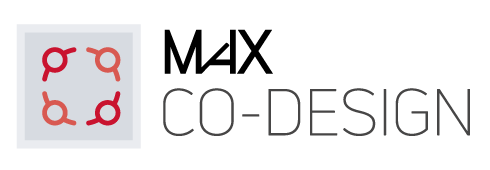
The co-design strategy of MAX is built to:
- develop an exascale co-design methodology for MAX flagship codes;
- implement co-design vehicles;
- develop specific and vertical proof-of-concept solutions, to validate exascale technologies and paradigms;
- develop a domain specific library to demonstrate the portability of performance across different accelerated technologies;
- develop a performance model integrating both applications and architectures features;
- integrate energy awareness;
- profile and measure performance improvements.
MAX co-design methodology is realized through a co-design cycle, including all the actions of the list, and interactions with other projects/CoEs (e.g. POP) and subjects (e.g. hardware and software vendors) of the exascale ecosystem.
Remarkable results have been obtained with the co-design vehicles that MAX actually developed: LAXlib and FFTXlib miniapps. They are becoming important tools to validate technology within MAX and well beyond MAX, since they are freely available and distributed to all other interested stakeholders of the many exascale efforts.
MAX also runs a number of important proof-of-concept projects, mostly based on co-design vehicles with different hardware and architectures.
Thanks to the implementation of the SIRIUS domain specific library, MAX demonstrates the feasibility of performance portability across different accelerated technologies (e.g. NVIDIA GPU and Intel MIC processors).
An important outcome of the co-design action of MAX is the development of a time accurate performance model including the details of both application and target architecture. This allows developers and architects to evaluate the effect on performance of different architecture designs (e.g. number of cores per node, communication bandwidth), in different application scenarios (e.g. scale-up vs scale-out simulations).
Finally, MAX co-design actions have already produced several tens of thousands of performance experiments and benchmarks to monitor the progress and effectiveness of MAX code exascaling effort.

